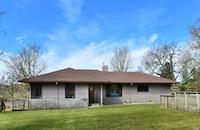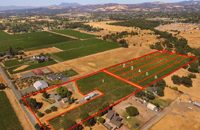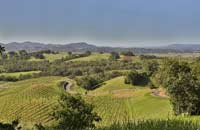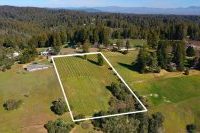The rest of this section was written before the subprime market collapse and although still technically true, the ‘mixed use’ lenders mentioned below were all technically subprime lenders – loans not resellable to FannyMae or FreddyMac – and they have all run for cover. As far as we can tell, first deeds of trust on large vineyard parcels (see land encumbered below) are not available in the current market.
This was a topic not originally covered on this web site, as it is not something we like to encourage. The idea of some young couple buying a vineyard and leveraging themselves to the limit and then suffering foreclosure because of a farming or market disaster is not something we want to face.
But there are enough people out there for whom financing is just another financial tool who can legitimately use it without substantial risk, we decided that it was something we should cover.
Financing a vineyard property is a unique proposition relative to financing a conventional home on a city lot. But it is not that much different than financing any other country or agricultural property.
The first concept to keep in mind is the idea of being “land encumbered”. Land encumbered means that the value of the improvements as a percentage of the total value of the property is small. Or to put it the other way, that the value of the land itself dwarfs the value of the improvements. Banks don’t like this and most conventional mortgage providers won’t lend on properties that are land encumbered—at least not through their normal programs. The issue boils down to liquiditiy. In general, homes on city lots are much more liquid than land.
So, when financing country property you turn to a set of lenders that specialize in “mixed use” which can mean anything from horse properties to vineyard to a country estate. In general the percentage down required is higher than that required for conventional mortgages. Usually 25% to 50% depending on how land encumbered the property. These lenders also look at lot more closely to you and your assets than the property. Rates are about a 1/4 to a 1/2 point higher as well.
Another common fact about financing vineyards in particular is that the vineyard is ignored as a source of revenue. I know that it may sound crazy to ignore what may be the most substantial improvement on the property, but if the vineyard is recognized as a business then what you are really asking for is a commercial or true “ag” loan. And that puts you into a whole new segment of traditionally higher risk and higher cost loans, that in general, you want to avoid. The vineyard can be valued at market value – which means the appraisal will come in.
Fortunately there are quite a few people in Sonoma County specializing in these kinds of loans and if you would like to be put in touch with one just contact us.









